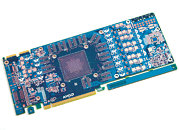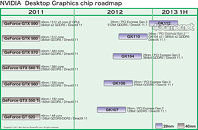
GK104-Based Products Arriving March 23
Expreview cited sources in the AIC (add-in card) vendors in pinning the launch of GeForce Kepler 104 (GK104) based products to March 23. The products launched are expected to be NVIDIA's first in its next-generation. Some label the top part based on GK104 as "GeForce GTX 670 Ti", while others call it "GeForce GTX 680". A March 23 launch explains reports of hectic activity in the green camp starting this week. NVIDIA typically enters NDAs with its partners over a wide time range, probably this one extends to April (since the launch is now reported to be towards late-March), which led some to believe Kepler was "delayed" to April. NVIDIA recently posted on its Facebook wall that people will be rewarded for their patience with an "unbeatable" product.






